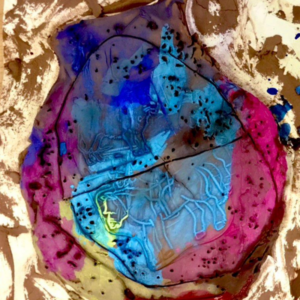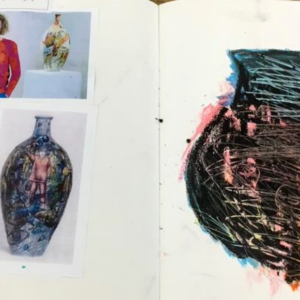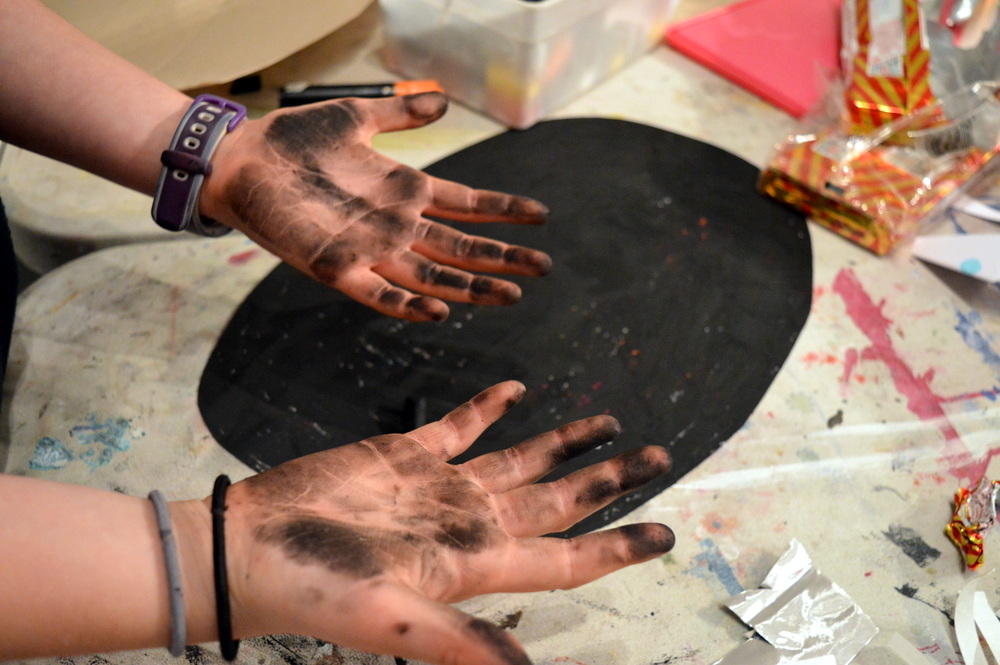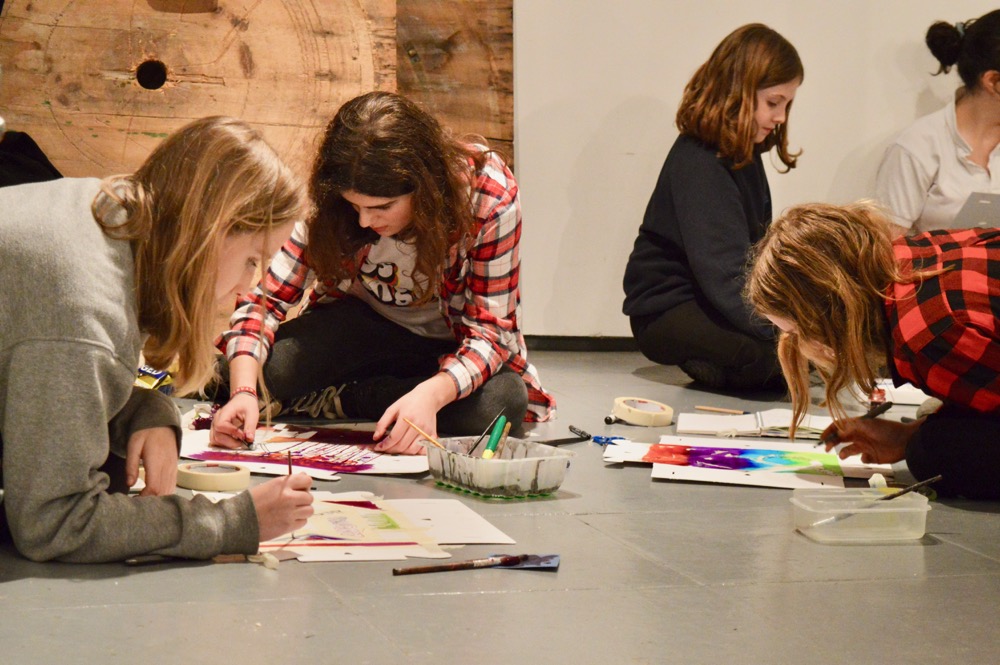This project is part of a collection of resources called Teaching Art to Year Three.
Jan Miller shares a class project that uses the work of a contemporary Japanese ceramicist to inspire vibrant paintings in a variety of materials. The children then used their own art to design ceramic vessels.
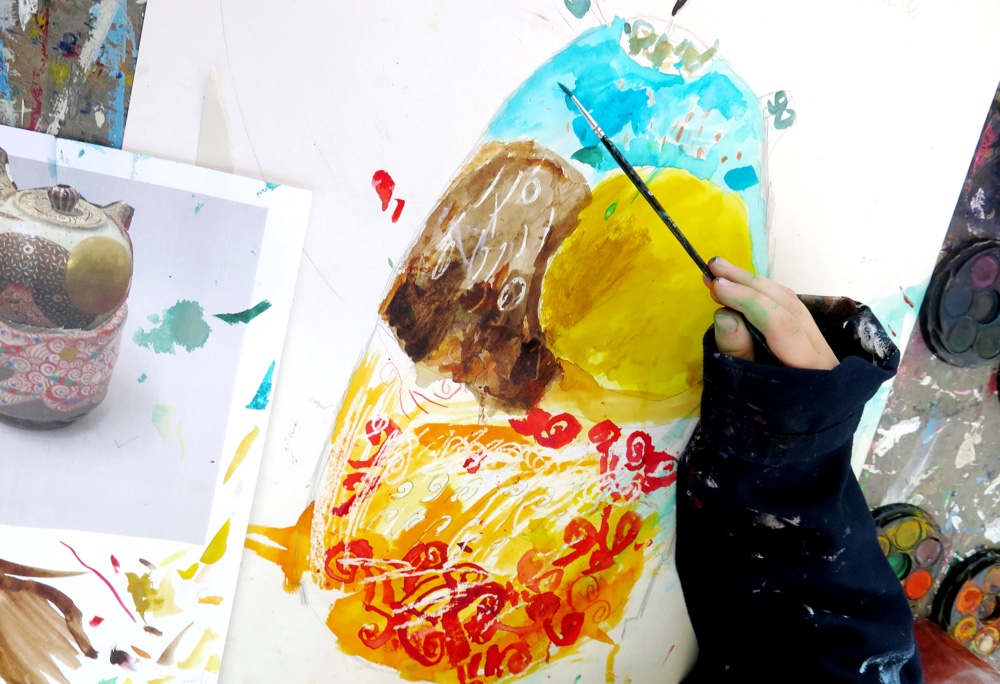
Context
This project was developed as part of a series looking at culture. Japan has provided us with lots of inspiration. We focussed on the work of a contemporary ceramicist working in Japan to inspire our paintings. In turn our paintings then inspired our own ceramics.
Usaka Koji used a moon as a central large gold circle in all his work and the simple repeated shapes, patterns and mark-making were inspired by his surrounding landscapes – Mount Fuji, waves, fishing boats. He too was inspired by the traditional imagery in Japanese woodblock prints.
Aims
• Use sketchbooks to draw from direct observation
• Explore new techniques and make progress in using other processes
• Produce a clay vessel, with sgraffitto patterns inspired by their own art
• Develop an understanding that art can be a spin-off from their earlier work – one research can develop several pieces
• Develop a project in which children feel confident in their response
• Deepen learning about a cultural artist
Who are the sessions aimed at?
The sessions were run with children aged 8 in Year 3.
The resources below can be used with children aged 7 to 11 (older KS 1 children and KS 2 children).
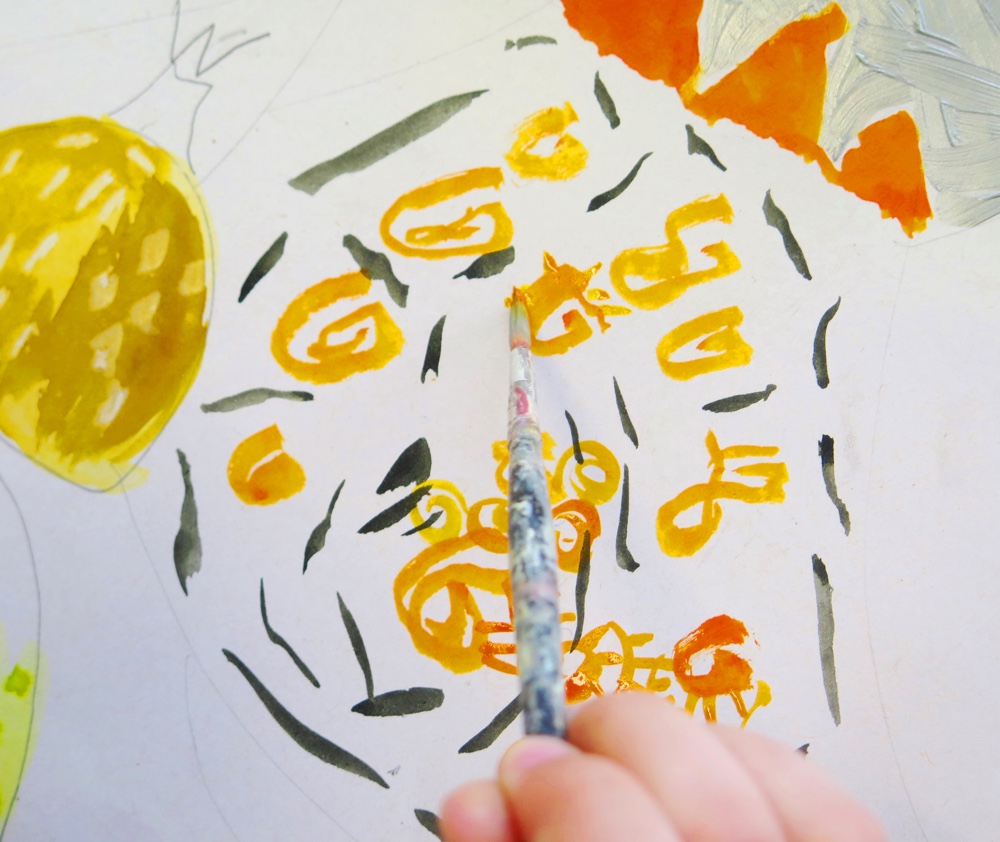
Which areas of exploration are covered?
• Develop the skill of observation drawing
• Controlling transparency and consistency with inks using wet on wet techniques
• Develop skill of making decisions – learning through exploration
• Explore mark-making and types of patterns to enhance Art
• Appreciation of cultural difference
• Working spontaneously and on a large format, inspired by each other
• Develop work over several sessions
• Making informed and independent material choices
• Working in 3D with a tactile material ensures pupils are able to benefit from experience of manipulating materials
How much time is needed?
Each of the five sessions took an hour with the whole class. If you were working with a smaller group of children the activities may take less time. If time is limited, you may work smaller, provide imagery, use one or two techniques or omit the ceramic element. Materials and technique areas can be arranged so children rotate rather than allowing free reign. The lessons using materials progressively built on each other and the children developed an understanding of process and materials. If you followed all the sessions you would cover the areas of exploration listed. The teacher could complete more of the preparation, rolling clay, prepping the bowls with cling film, but these are all useful skills for the children to tackle, time permitting. Sketchbooks were available in all lessons to continue research drawing and making notes when there was spare time. The lesson could involve the children drawing their labelled plan of intentions first for their ceramic rather than spontaneous making.
Extension ideas
The children worked on several Japanese-themed pieces of art simultaneously from research into their culture – food, clothes, houses, rituals, art like we did.
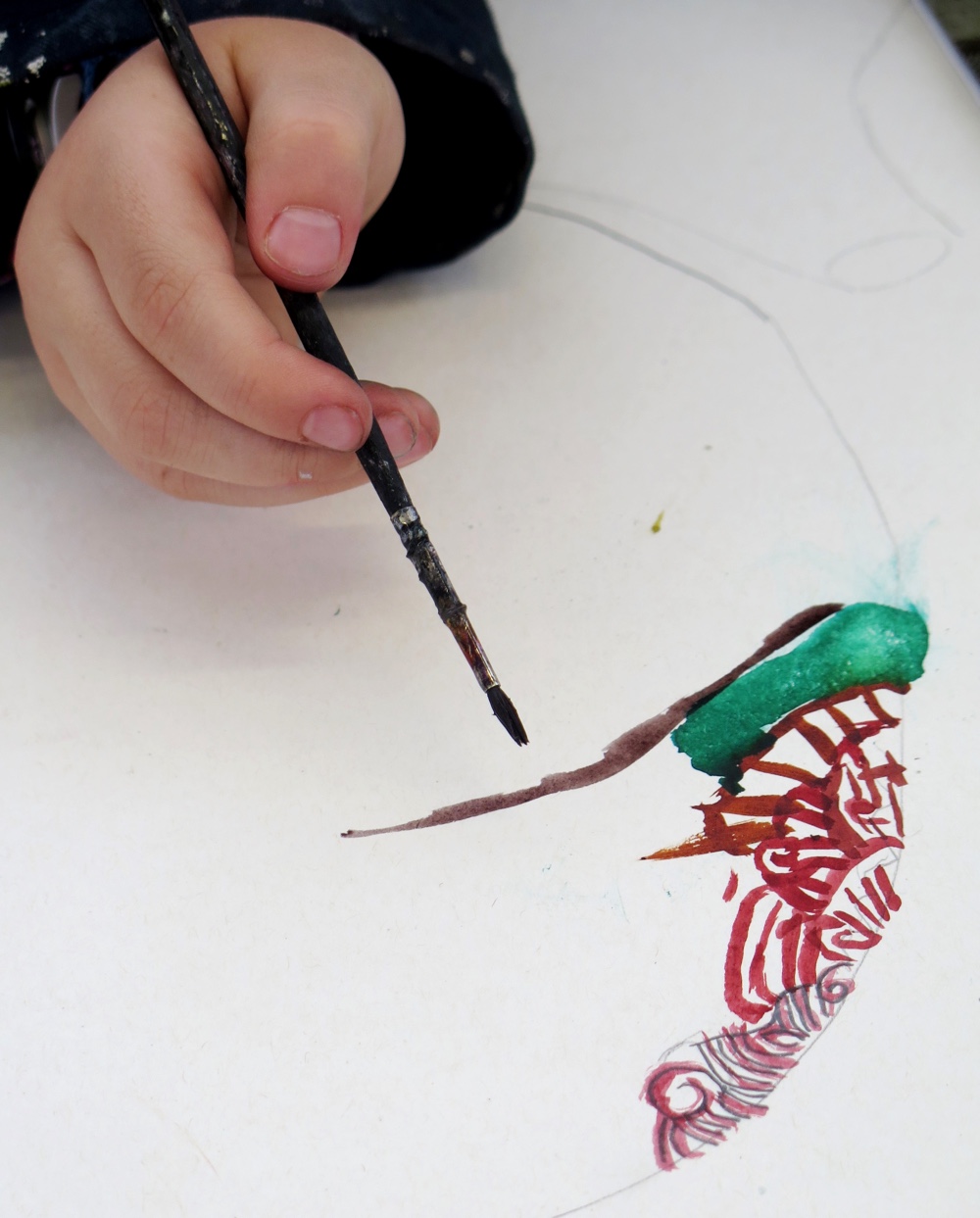
Where might the sessions be used?
• Classrooms (as part of art lessons or workshop)
• After-school art club or AG&T group
• Community groups (i.e. Scouts and Guides)
• Gallery, Museum or Art Organisation workshop
Materials and Equipment preparation
• Large paper – back of recycled paper is fine. Thicker paper is best if using wet materials
• Art materials and tools- watercolours/ink palette. Brushes inc. detailed brushes. Dip pens, felt tips, coloured pencils, oil pastels
• Sweet wrapper collage for gold/silver, or tin foil
• Clay, 3 colours of decorating slip. Brushes and Pencils to scratch in designs. (you can use paint and varnish or PVA for glaze instead if air drying clay)
Context
Other Japanese work was completed in the same term, in lesson, lunchtime and in the after school club.
TIPS
Ceramics from any culture, and any artist can be used for inspiration.
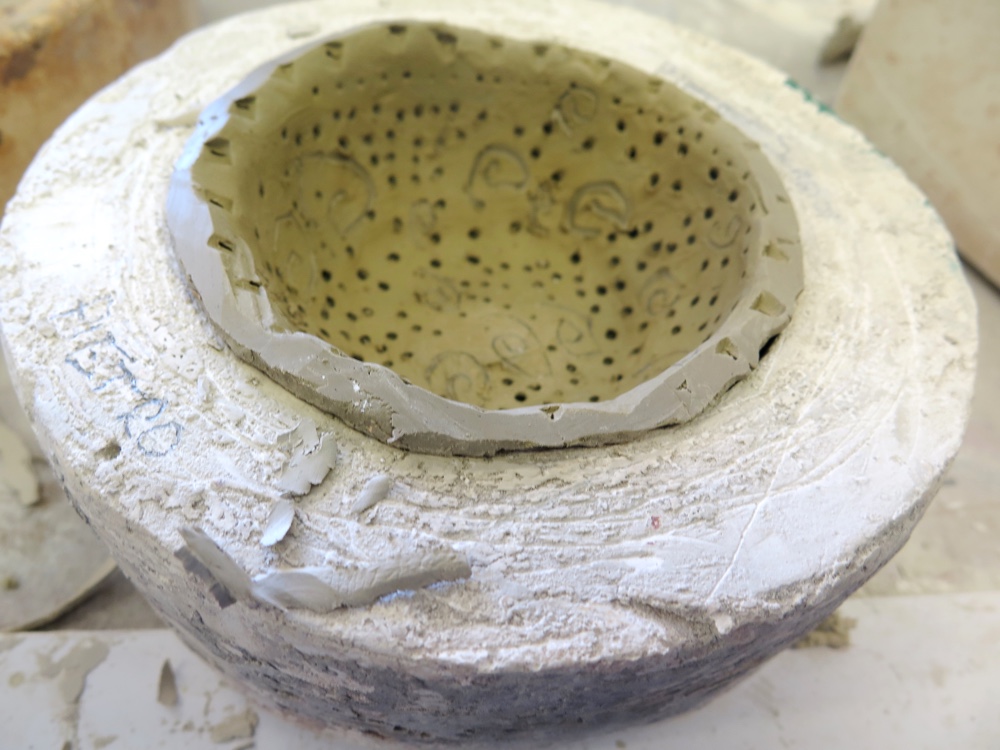
ACTIVITY:
Week 1 INTRODUCED TO THE WORK OF USAKA KOJI
Children researched and looked at images of the ceramics. They sketched the shapes of the pottery and the patterns in their sketchbooks. They experimented with paints and inks to achieve the limited colours that the artist regularly works with.
To access all content, I would like to join as…
AccessArt is a UK Charity and we believe everyone has the right to be creative. AccessArt provides inspiration to help us all reach our creative potential.
See This Resource Used In Schools…
